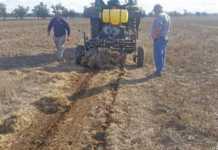Ever since Prof William Albrecht devised his science of creating fertile soil about 60 years ago, he’s come under fire from soil scientists who teach a different approach to soil fertility. Recently, there have been two attacks on the Albrecht system in South Africa, one from a respected soil scientist and the other from a senior agronomist employed by a large fertiliser company.
Farmers need to understand that there are two major approaches to soil fertility. The first is ‘academic soil science’. I refer to it as ‘academic’ because it’s the version taught by most universities and agricultural training institutions in South Africa and around the world.
It’s the system most commonly applied and adopted by agronomists working in the fertiliser industry. It’s also the most researched by universities funded by that industry. Soil chemistry and soil physics are the two pillars of academic soil science. By contrast, the Albrecht system has three pillars – soil chemistry, soil physics and soil biology. As I see it, the fact that the ‘academic approach’ largely ignores the all-important role that the plant/soil ecosystem plays in creating fertile soils makes it an incomplete science.
Treating the problem
What motivated Albrecht to re-write the science of soil fertility?
He started out with a mission to have a positive influence on human health and studied medicine. After the first few years, he concluded he was going down the wrong path because undue emphasis was placed on treating symptoms while scant attention was paid to defining the cause of the problem. Albrecht dropped medicine in favour of agriculture.
Intuitively, he reasoned he could best achieve his mission by producing healthy food. With a degree in soil microbiology he took up a position in the department of soil science at the University of Missouri where he was tasked with developing inoculants for legumes. In the 1920s, the science of producing effective Rhizobium inoculants was in its infancy.
Albrecht found his inoculants to be effective in the lab. He then took the testing further, to plots at the university research station and to on-farm trials. When field trials produced erratic and unpredictable results, Albrecht concluded that the problem lay in the soil and not in his inoculants. He set about finding the ideal mineral balance that would favour desirable microbial activity.
Life task
He reasoned that correctly mineralised soils would produce healthy crops and healthy animals. Defining this balance became Albrecht’s life task, and he coined the phrase: “Healthy soil, healthy plants, healthy animals.” Critics of the Albrecht system miss the point that it’s designed to promote healthy and productive soil life. They seem to ignore the fact that crop production is essentially about creating fertile soils largely self-sustaining in terms of nitrogen production. They tend to overlook the incredible plant/soil ecosystem.
I wonder if they know that a large percentage of the energy produced by plants is pumped out through the roots to feed soil micro-organisms that are such a rich source of nutrients for the plant. They produce plant nutrients and growth stimulants and free locked-up nutrients. Scientists can’t fully explain the intricacies of this marvellous money-saving symbiotic relationship.
Academic soil science focuses on feeding the plant, while the Albrecht system focuses on feeding the soil – including soil life – to feed the plant. It’s true that the Albrecht system can be expensive to start with when soils have to be brought into the correct mineral balance, but in the long run it’s quite amazing to see just how much money can be saved on fertiliser bills.
John Fair is a leading pasture expert. He heads up Fair’s Biofarm Assist and can be contacted on 058 622 3585 or [email protected].












